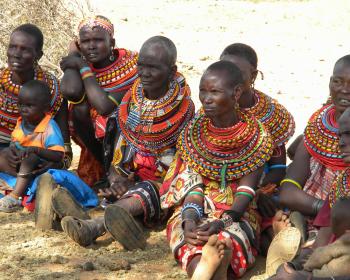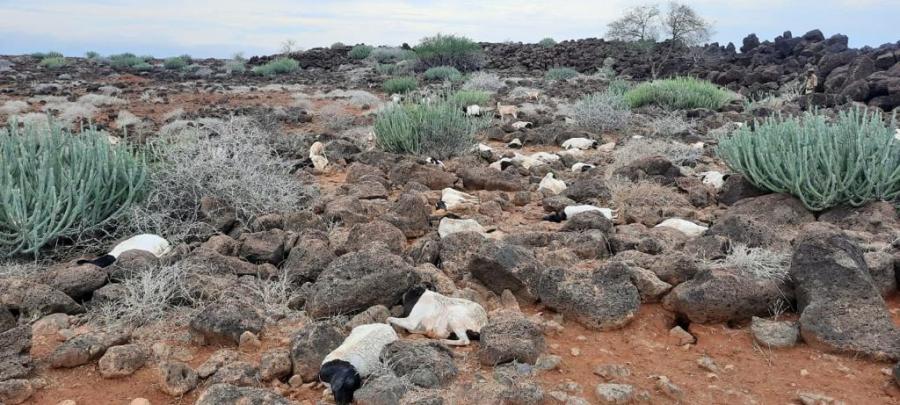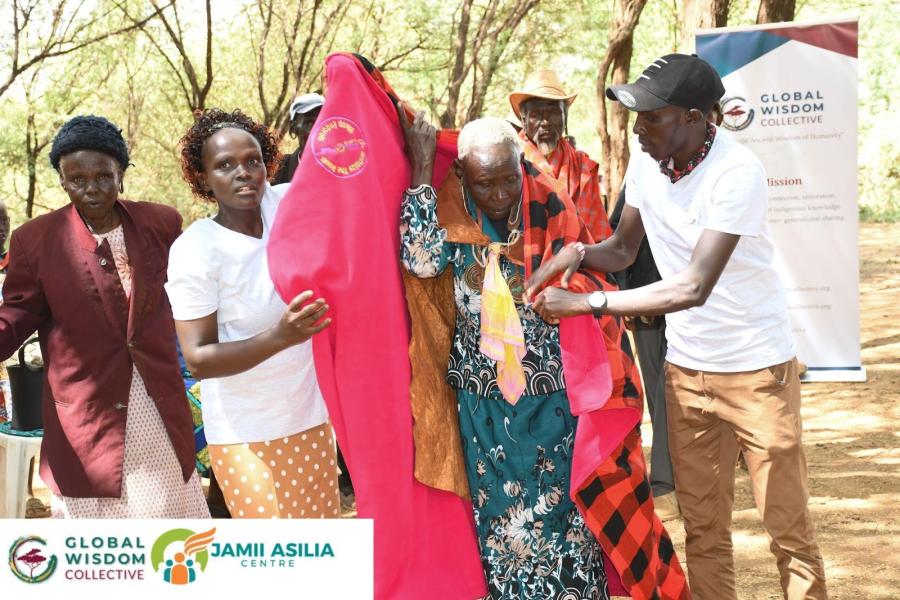For outsiders, the elaborate beadwork worn by Maasai herders may seem nothing more than a colorful decoration that enlivens ceremonies and dancing. But for the Maasai themselves, the beads capture their whole world.
Consider the jewelry worn by women when they marry. Marriage in traditional Maasai communities is always an arranged affair, with parents choosing the most appropriate partner for their son or daughter. Once the match is decided, the mother of the bride will make two items. The first is a necklace of beaded strings that indicates the woman is engaged. Both men and women wear beaded-string necklaces as everyday decoration, but the engagement necklace is distinctive because the strings are intertwined. The plaiting represents the interconnection between husband and wife. The second item her mother will make is a wedding collar. This is a large, flat, leather circle about 12 inches across covered in brightly colored geometric shapes formed from beads. There is also a square section protruding from the front of the disk, with a number of long beaded strings hanging from it. The strings have cowry shells attached to the bottom. Every part of the collar represents some aspect of the bride’s community.
The collar as a whole is a map of the village. Maasai villages are always laid out in a circle, with a fence around the outer perimeter (represented on the edge of the collar by a thin ring of alternating dark and light beads) and houses arranged just inside the fence (each of the geometric shapes on the collar represents a house in the village). The center of the village is where the cattle, goats, and sheep are kept at night, and this is represented by the hole in the center of the collar. “When you are wearing this, you are carrying the whole village on your body,” says John Sakuda, a member of SIMOO, a Maasai NGO that is partnering with Cultural Survival. The number of beaded strings hanging from the collar indicates the number of animals that will be given by the groom’s family to the bride’s family (the Maasai use a reverse dowry system). As each other community member presents his gifts of animals, he ties a knot in one of the strings: a large, loose knot for a cow, and a small, tight knot for a goat or sheep. The cowry shells on the end of the strings are the symbol of peace (cowries are also placed on a baby’s eyes to promote healthy eyesight).
The bride wears her marriage collar only on her wedding day, but Maasai women wear similar collars on a more regular basis for dancing. These collars are generally larger in diameter, without the attached square or the dowry strings, and a woman may wear eight or ten of them stacked up. As the woman dances, she uses a particular motion to make the collars fly up and down. These dancing collars also represent a village, with the fence line along the perimeter and divisions showing how many homesteads there are in the village. In addition there may be straight lines running radially at intervals around the ring. These indicate each family’s private entrance to the village compound, an entrance that the cattle know as well as the people—each family’s cattle will sort themselves out of the herd each morning and use their family’s passage to leave the compound and head out into the pasture. The village’s main gate is represented by a heavy radial line in the front of the collar. The colors and patterns used in these dancing collars often indicate the wearer’s interests. For example, an alternating light-and-dark pattern might show that the woman favors zebras, or an orange color might indicate her love of sunset. Blue often figures into these collars, too, representing the blue sky, above which live the Maasai gods.
The principal beaded item for men is the shield that each man carries. The spear and shield are accoutrements of manhood. Traditionally an 18-year-old boy became a man by killing a lion and returning with the mane. These days, because of laws protecting lions as an endangered species, the Maasai elders have loosened the rules, and a boy may borrow a mane from an older man and use that in his coming-of-age ceremony. Alternatively, a group of 100 young men will go out and kill a single lion, which they share. (An aside about Maasai and wildlife: John Sakuda says that lions can tell the difference between a man and a woman and a child, and they will never attack women and children walking alone in the bush. But they know when a man is out to hunt them, and they react accordingly. He also says that if you are charged by a rhino and there is no tree nearby to climb—the preferred method of rhino avoidance—then you should run away as fast as you can for about 100 feet, and then make a sharp U-turn. “Rhinos don’t know anything about U-turns,” he says, “so the animal chasing you will run on for another 500 yards before he makes a wide turn, and you can just walk away.”) A white star on a man’s shield indicates that he has committed an act of conspicuous bravery—and in a society where killing a lion with a wooden spear is considered standard fare, that takes some doing.
All Maasai men and women wear a beaded pendant corresponding to their age class. Every 10 years marks a new age class, and all the children born in the following decade will wear the same kind of pendant to indicate their generation. In most Maasai beadwork the design of each piece is unique to the maker and the wearer, but all the pendants for a given class will be identical.
Maasai beadwork is done by women, generally in the evenings. Women in Maasai society have an enormous workload, doing almost all the physical work in the village, from building houses to fetching water and firewood to tending children and cooking meals. Susan Nkeporia, another member of SIMOO, says women don’t have time to do beadwork until all the day’s chores are done. In the past the women made the beads, too, using seeds and dried grasses dyed with various compounds. Today the beads are plastic, but the craftwork is the same as it always was. The beadwork shown here was made by Jane Kamuasi and Susan Nkeporia. With help from Cultural Survival they and John Sakuda came to the United States in November to represent SIMOO and explain Maasai culture at schools in New England. At their performances, they sold their beadwork, with the proceeds paying for women’s education back home.



